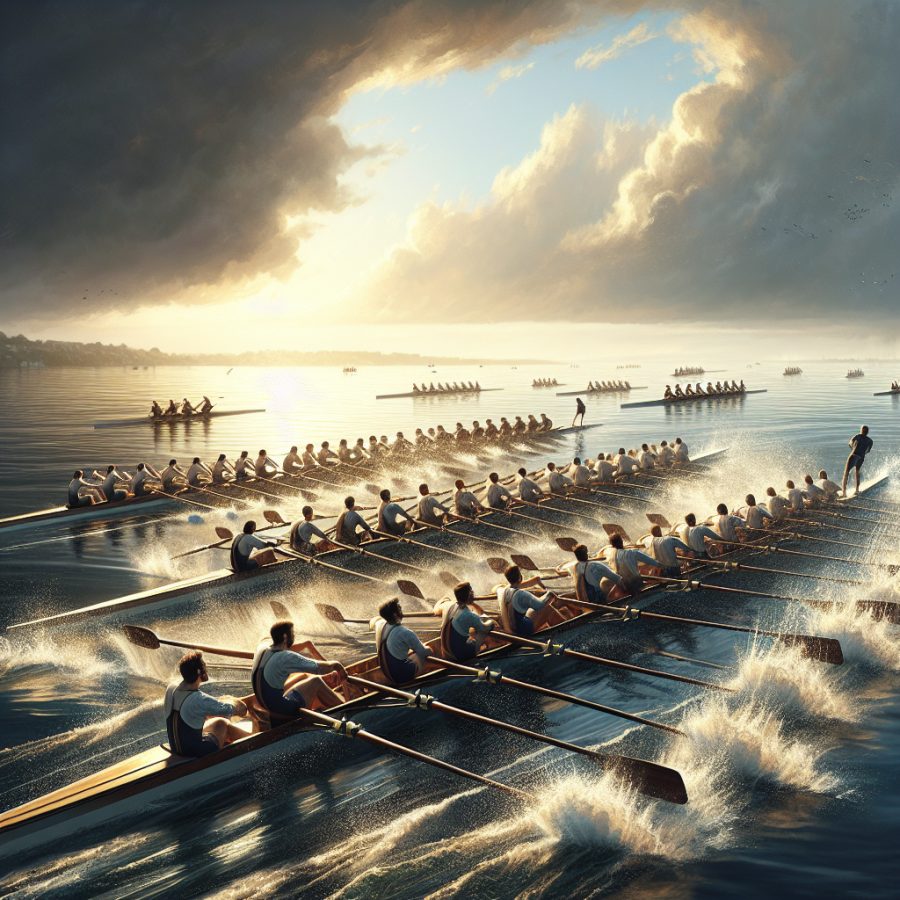Mastering the Elements: Essential Techniques for Competitive Gig Rowing
Gig rowing is a water sport that involves racing traditional, long boats known as Cornish pilot gigs. As with any competitive sport, mastering specific techniques and elements is crucial for success. In the context of competitive gig rowing, understanding these fundamentals can make the difference between victory and defeat.
**Understanding the Boat and Its Dynamics**
Successful gig rowing begins with an intimate knowledge of your vessel. Each gig has its unique quirks with regard to balance, turning radius, and response to rowing input. Spend time getting to know how your gig moves in various water conditions, including how it behaves in calm waters versus choppy seas. This understanding allows you to adjust your technique to match the gig's characteristics and the conditions you face during a race.
**Synchronization and Timing**
One of the most crucial aspects of gig rowing is the synchronization of the crew. Perfecting this requires continuous practice. Each stroke must be timed with precision, as the collective power and momentum of the team depend on it. Drills focusing on the catch (where the oar enters the water) and the finish (where it exits) can help in achieving an almost metronomic rhythm among crew members.
**Effective Communication**
Communication is key in a team sport like gig rowing. The coxswain, or 'cox', plays a vital role in directing the crew and relaying tactical information. However, all members should be able to communicate effectively with concise and clear commands, especially during critical race moments such as the start, turns, and the final push to the finish line.
**Developing Stamina and Strength**
Due to the physical demands of the sport, rowers must possess both endurance and power. Training should therefore include cardiovascular exercise to build stamina and weight training to enhance overall strength. Additionally, on-water practice should involve various intensity levels, from steady-state rowing to high-intensity interval sessions that mimic race conditions.
**Technical Skill and Oar Handling**
Gig racing demands precise oar handling. This includes managing the oar blade's angle during the drive and recovery phases to minimize drag and maximize propulsion. Practice feathering the oar (turning the blade parallel to the water) on the recovery to reduce wind resistance. Rowers must also adjust their grip on the oar to ensure smooth transitions between strokes.
**Strategic Race Planning**
Races are not won by strength and endurance alone; strategy plays a significant role.
Read also:
The Art of Casting: Techniques for Successful Angling
The Camaraderie of Crews: Building Team Spirit in Gig Racing Events
Gig racing, an exhilarating marine sport derived from the practice of rowing Cornish pilot gigs, epitomizes the intense bond and camaraderie that can only be formed by a team united towards a single goal: mastering the waves and propelling their boat to victory. This close-knit environment fosters a unique team spirit that is both nurtured and manifested within the tight confines of the gig.
The success of gig racing hinges on the precise synchronization of rowers as they navigate the challenging sea conditions. It is an endeavor where individual prowess is overshadowed by teamwork. Every team member has an important role, from the stroke, who sets the rhythm for the rest, to the coxswain, who steers the gig and orchestrates the crew’s movements. The shared struggle against the elements and rival crews alike instills a deep-seated sense of unity among the rowers.
Building this team spirit begins long before the race day. It starts with rigorous training sessions where physical conditioning is coupled with technical drills to perfect rowing techniques and to enhance the crew’s harmonious movements. Crews spend countless hours on the water, learning to read the sea and the weather, understanding how each can affect their performance and how they can adapt their strategy accordingly.
Off the water, gig racing teams often engage in team-building activities. These activities can range from shared meals to psychological workshops aimed at fostering trust and open communication. The goal is to ensure that each team member feels valued, heard, and integral to the team’s success. This off-the-water camaraderie is crucial, as it translates into intuitive communication and mutual support during a race.
When it comes to race day, the atmosphere is electric with anticipation and nerves. Teams prepare their gigs with meticulous care, knowing that every oar, seat, and hull is an extension of their collective effort. The trust built between the crew is paramount as they rely on each other to make split-second decisions amid the adrenaline-fueled competition.
Part of building team spirit involves acknowledging and embracing individual strengths and weaknesses. The crew learns to compensate for and complement one another’s skills, a strategy that not only enhances performance but also reinforces the team bond. As they overcome challenges together, from grueling training sessions to equipment malfunctions or tactical errors in competition, they develop a resilient group dynamic.
Moreover, the spirit of the team is often visible to spectators through the crews’ rituals and traditions.




